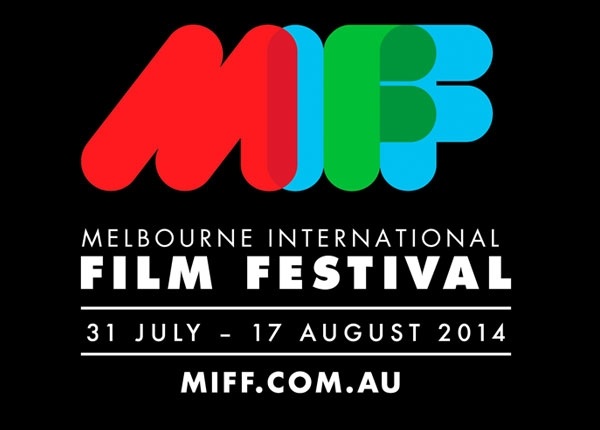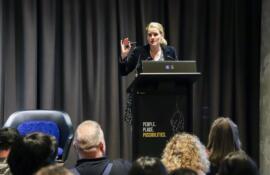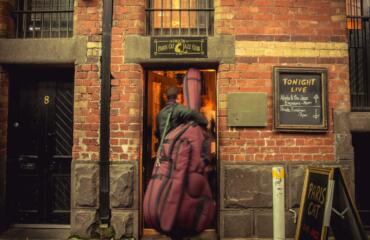
There is a moment towards the end of Xavier Dolan’s Mommy, far and away the highlight of the 63rd Melbourne International Film Festival, that reminds you just why we have the movies.
Predominantly filmed in a square 1:1 ratio, Dolan extends his film to the full width of the screen for two sequences, the second of which is a montage depicting a mother’s hopes for her troubled son’s life.
It is a sublimely melodramatic moment of filmmaking, simultaneously drawing attention to the medium and heightening the emotion of the sequence. In a cultural age where self-consciousness is the norm, it takes a brave filmmaker to take this self-consciousness and repurpose it away from irony and towards emotion.
Such moments of collective catharsis were played out in a variety of venues at this year’s MIFF, the first without the regular hub of Greater Union’s Russell Street complex. Instead, films were screened at a variety of inner city venues, from RMIT’s Capitol Theatre to Hoyts Melbourne Central.
The latter, in particular, made for some interesting queuing experiences, particularly on Saturday nights, when MIFF mingled with the regular blockbuster crowd.
Hoyts’ Xtreme Screen was also home to the first screening of Goodbye to Language, Jean-Luc Godard’s experiment with 3D. The experience was a nauseating one, as objects went in and out of focus, the camera tilted and spun upside down and subtitles were blurred. There were many walkouts, but those of us who masochistically stuck it out were rewarded with the realisation that this was probably the first and last time we’ll see a Godard film at the multiplex.
This bizarre intermingling of irony and sincerity made for a film that somewhat baffled its audience. You choose to either ride this wave or let it dump you. — onL For Leisure
Other unique screening venues included the Arts Centre’s Hamer Hall, where MIFF’s opening night film, the Spierig Brothers’ Predestination, was screened. Filmed in Melbourne and starring Ethan Hawke and Sarah Snook, the movie is a gloriously bonkers time travel story. Watching it, I went from predicting every single plot twist to having absolutely no idea what was going on.
A similarly confounding highlight of the first week was L For Leisure. The Kickstarter-backed film consists of a series of badly acted vignettes in which American post-grad students discuss things such as philosophy and being mellow. These scenes sit oddly next to lingering shots of water and a very earnest synth-pop soundtrack. This bizarre intermingling of irony and sincerity made for a film that somewhat baffled its audience. You choose to either ride this wave or let it dump you.
It’s a cliché but it’s true: the films you go to with no expectations are the ones that pleasantly surprise. Finding myself with time to kill, I went along to Vivian Qu’s Trap Street, a fascinating Chinese romantic thriller that explored the murky world of the Chinese bureaucracy and surveillance. Another surprise was Abderrahmane Sissako’s Timbuktu, a film that charts the takeover of a town by fundamentalist Islamists. It deftly uses a light formal touch to mix humour with tragedy.
The messy Eastern Boys was an appropriate midway point for this year’s MIFF. The film is overlong but contains two enthralling set pieces. The opening sequence, a good 15 wordless minutes, is shot from the sky above a French train station, and tracks a gang of Eastern Europeans as they hustle commuters.
The second set piece is a similarly lengthy sequence in which a man, held hostage in his own apartment, dances with the same gang members. As they dance we see the men emptying his apartment of its valuables. Both moments, with their reliance on images and sound, are pure cinema.
Particularly strong this year was the documentary strand. At Berkeley, Frederick Wiseman’s four-hour observational documentary on the University of California, Berkeley, was my highlight, not just in content but context.
Because of its length, there became a comfortable familiarity between audience and film, with people happily getting up, grabbing coffee and food, and returning. The movie is a compelling portrait of a university and ideal that, as I have noted previously, just might be in trouble.
The second week of the festival reached its appropriately messy zenith 20 minutes into Boyhood, when a young man entered the cinema and yelled at us to evacuate. Apparently the fire alarms had been set off, and after half an hour of wandering around Swanston Street and the State Library, we reassembled. The mood had been irrevocably ruined, however.
If nothing else, the experience of Boyhood reinforced the necessity of cinema to remain a distraction-free art form. As noted by director James Gray, whose film The Immigrant played at MIFF this year, in the cinema you play by the movie’s rules. At MIFF, you play by the festival’s rules. It is a liberating, exhausting and occasionally sublime thing to spend two weeks in various dark rooms, seeing the world through the eyes of other human beings.



